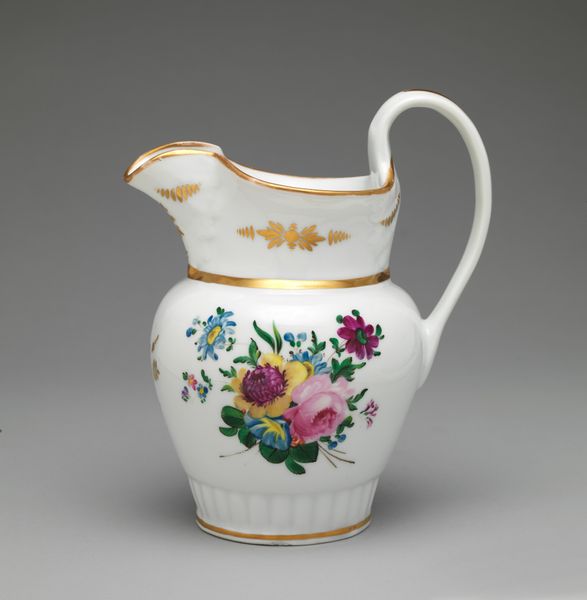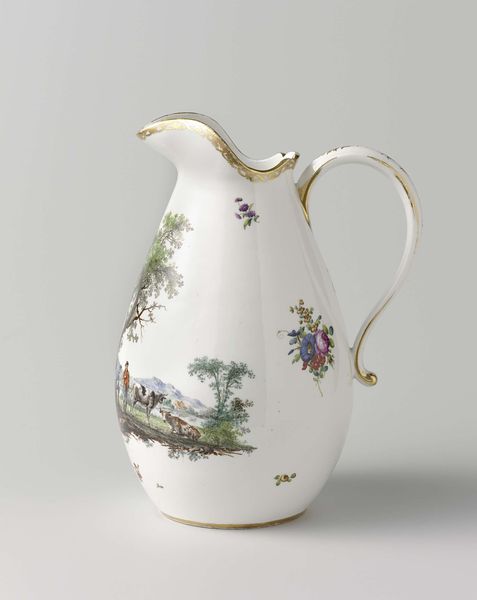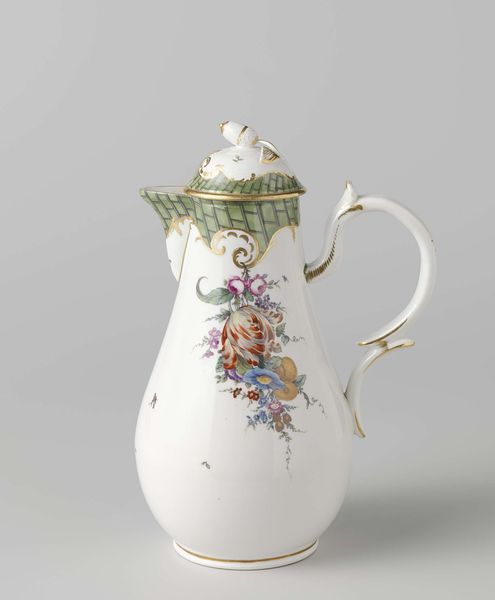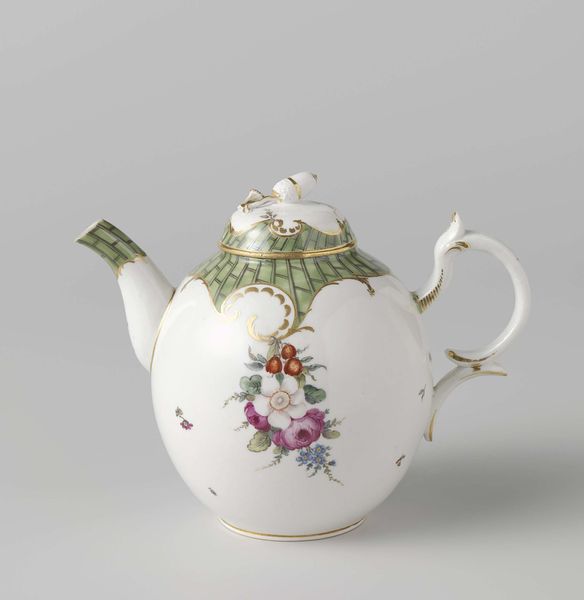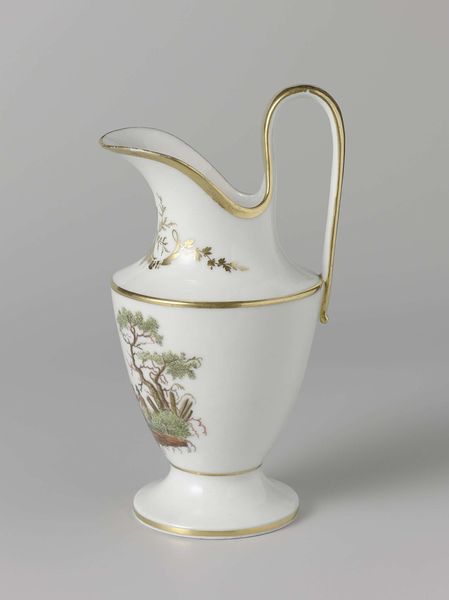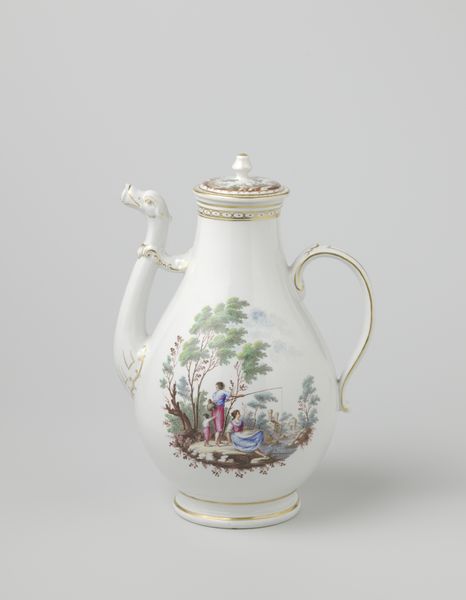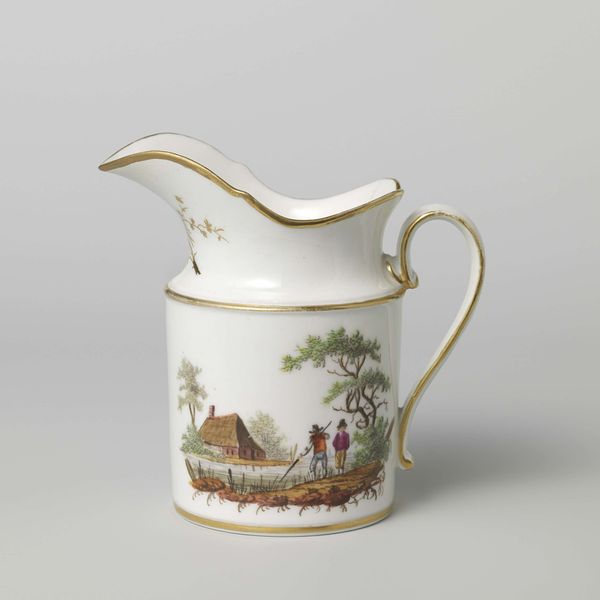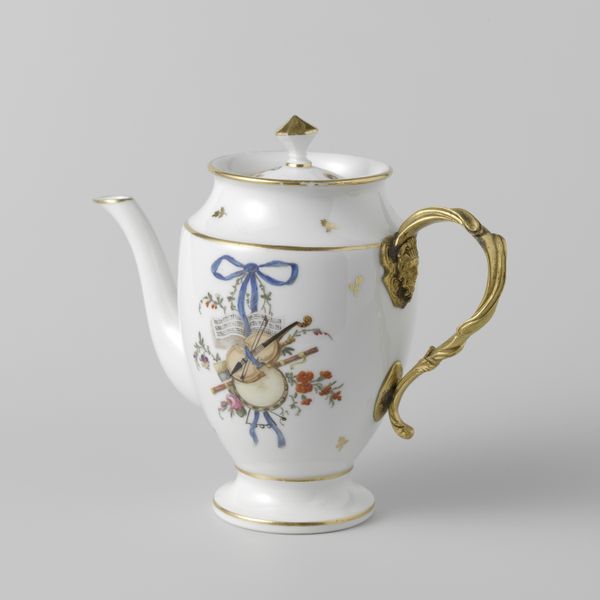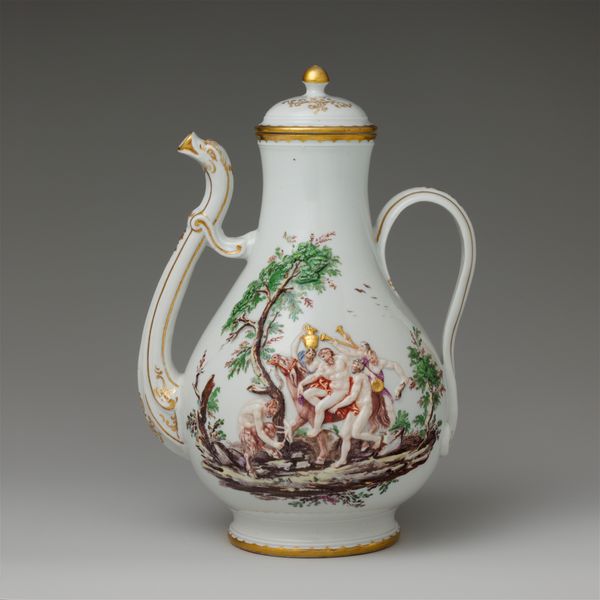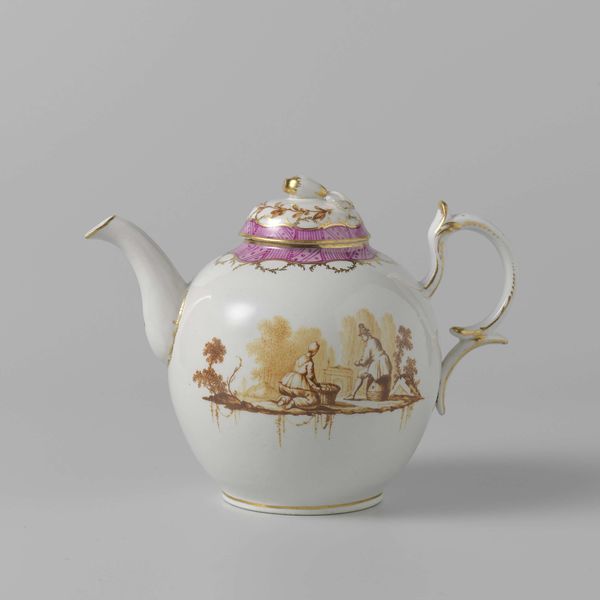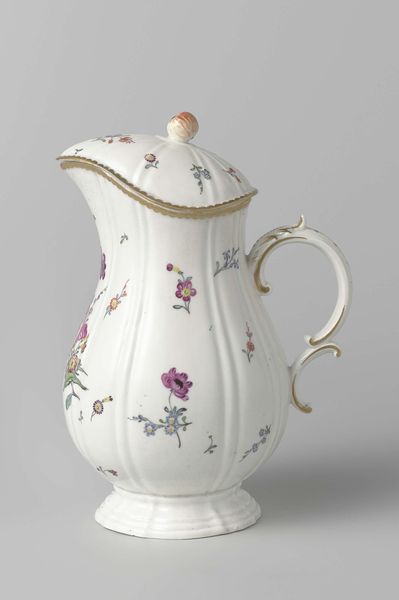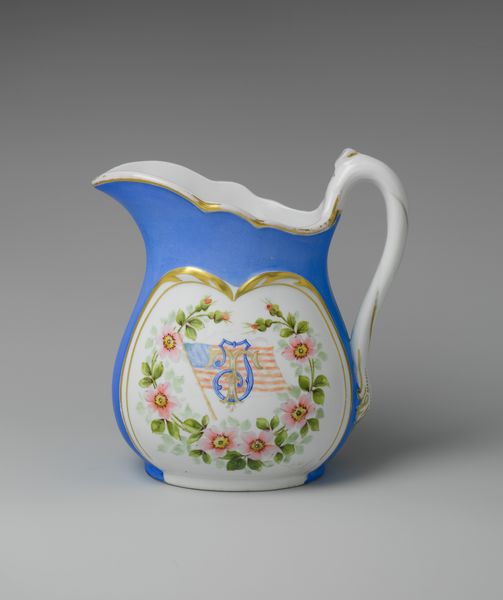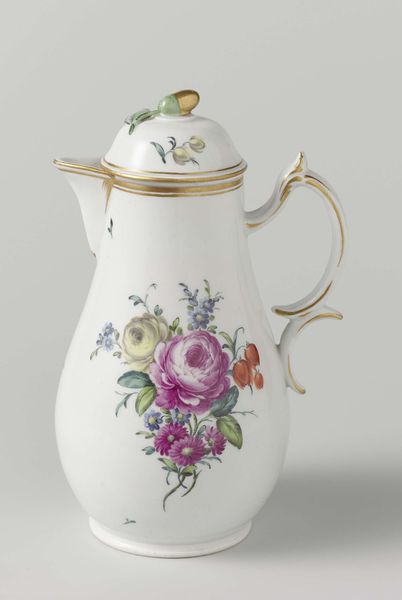
Melkkan met deksel, beschilderd met bloemen en laddermotief c. 1775 - 1778
0:00
0:00
loosdrecht
Rijksmuseum
Dimensions: height 15.3 cm, width 10.4 cm, diameter 8.2 cm
Copyright: Rijks Museum: Open Domain
This milk jug with lid, decorated with flowers and a ladder pattern, was made in Loosdrecht, a town near Amsterdam. These kinds of decorative objects can tell us a great deal about Dutch society, and the self-image of its elites. The jug is porcelain, a material whose secrets were closely guarded by the Chinese for centuries. The Dutch East India Company played a key role in introducing porcelain to Europe. By the 18th century, porcelain was being manufactured in Europe, but it remained a luxury item. The floral decorations and the ‘ladder’ pattern reflect the influence of French Rococo style, popular among the elites of Europe. Loosdrecht porcelain factories like this one were often founded and run by members of the Dutch aristocracy, in this case, Joan Hendrik graaf van Nassau Woudenberg. Objects like this milk jug offer us a window into the world of the Dutch elite. To understand such objects fully, art historians consult a range of sources: studies of decorative styles, social histories of elite taste, and company records of the porcelain factories themselves.
Comments
No comments
Be the first to comment and join the conversation on the ultimate creative platform.
